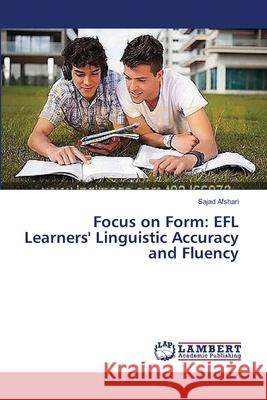Focus on Form: EFL Learners' Linguistic Accuracy and Fluency » książka
Focus on Form: EFL Learners' Linguistic Accuracy and Fluency
ISBN-13: 9783659396861 / Angielski / Miękka / 2013 / 64 str.
One of the most controversial questions raised by second language acquisition researchers and teachers is whether and how to include grammar in second language classrooms. Focus on form (FonF) was proposed as an alternative for the two polarized views, i.e., focus on formS which is limited to formal elements of language and focus on meaning which excludes these elements. It has been claimed that FonF is the most effective way of drawing learners' attention to language forms in the context of meaning-centered language use; however, there is no consensus as to the degree to which it should be explicit. This book, therefore, is an attempt to resolve the controversy and shed some light on the role of FonF instruction in EFL context in general and the role of implicit and explicit FonF techniques on their linguistic accuracy in particular. The findings should be reassuring to those teachers who try to develop accuracy as well as fluency of their EFL/ESL learners.
One of the most controversial questions raised by second language acquisition researchers and teachers is whether and how to include grammar in second language classrooms. Focus on form (FonF) was proposed as an alternative for the two polarized views, i.e., focus on formS which is limited to formal elements of language and focus on meaning which excludes these elements. It has been claimed that FonF is the most effective way of drawing learners attention to language forms in the context of meaning-centered language use; however, there is no consensus as to the degree to which it should be explicit. This book, therefore, is an attempt to resolve the controversy and shed some light on the role of FonF instruction in EFL context in general and the role of implicit and explicit FonF techniques on their linguistic accuracy in particular. The findings should be reassuring to those teachers who try to develop accuracy as well as fluency of their EFL/ESL learners.











